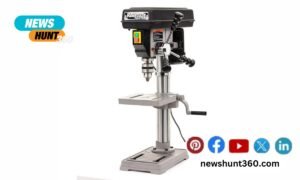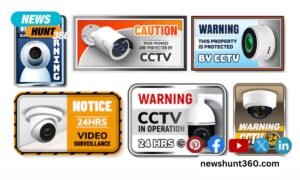Computer vision is an artificial intelligence area that teaches computers to analyze and comprehend images and take actions or make recommendations based on the information. Machines can reliably detect and categorize things using digital pictures from cameras and videos and deep learning models and then react to what they see, watch, and understand.
Computer Vision has found applications in a wide range of demanding industries, with these algorithms able to help and, in some circumstances, surpass humans. Vision Systems are used in various applications, including medical imaging, Customer experience, recommender systems (marketing), and everyday activities such as driving and shopping.
This blog will go through various computer vision applications and how organizations are adapting scalable vision systems to solve problems and provide value to their customers.
Contents
1. Healthcare
Computer vision can provide significant value to healthcare. While computers will not be able to replace healthcare workers entirely, they may supplement regular diagnostics that take a lot of time and skill from human doctors but don’t add much to the final diagnosis. In this sense, computers serve as a valuable tool for healthcare workers.
Because 90 percent of all medical data is image-based, there has been a slew of Computer Vision applications in the healthcare industry. The system can detect MRI and CT scan imagery problems with considerably better accuracy than medical practitioners. Radiologists, cardiologists, and oncologists have embraced Computer Vision to identify early-stage cancers, arteriosclerosis, and hundreds of other diseases. It’s also become an essential part of a lot of invasive treatments.
2. Customer Experience
Recent retail innovations like Amazon Go have gotten a lot of press, but there’s a lot more to it than that. Many Computer Vision applications and technologies have effectively been incorporated into the CRM sector over the last few years, from sales and marketing to customer help and retention. Computer vision may be a game-changer in retail, offering significant insights into customer behavior and facilitating upselling and cross-selling. It can update a customer’s profile with vital information based on visual data from smart telematics devices, a game-changer for insurance and utility providers. It can also assist customer service teams in detecting issues before they occur, reducing unhappiness and attrition.
When a client contacts a firm with a technical or service issue, Computer Vision can quickly route the case to the appropriate agent and assist the employee in diagnosing and resolving the issue considerably faster than if they relied just on speech or text.
3. Law and Order
Computer vision may be used to scan live or recorded surveillance footage to provide critical information to law enforcement and security personnel. For example, based on previous data, computer vision may be used to scan live footage from a public location for dangerous things such as weapons or to identify suspicious behavioral or movement patterns that may anticipate any unlawful conduct by humans. With more research, computer vision may be used to scan crowds of people and alert authorities to the presence of any persons of interest or wanted individuals. As a result, computer vision can aid in quicker apprehending suspects and preventing crimes.
4. Automotives and Driverless Vehicles
Driverless automobiles, which primarily rely on Computer Vision and Deep Learning, have caught the public’s imagination. At the same time, autonomous car technology hasn’t yet reached the stage where it can completely replace human drivers. Driver behavior is used to automate lane finding, assess road curvature, identify dangers, and understand traffic signals using artificial intelligence.
Electric car maker Tesla was one of the first businesses to abandon LiDAR-based driving systems, relying instead on computer vision and radar to steer its vehicles. Andrej Karpathy, Tesla’s Director of AI and Autopilot Vision, says that LiDAR is prohibitively expensive compared to cameras and that a vehicle must scan localities using LiDAR before it can use the LiDAR-based tech-stack for guided driving on the road, which severely restricts the places where a vehicle can go autonomously. While LiDAR data helps detect objects, it isn’t as useful for image recognition. Tesla has just abandoned radar and is already delivering vehicles guided only by its Vision algorithms. Radar adds noise to their models because their vision systems are so reliable.
5. Facial Recognition and Biometrics
Computer vision technology is also used in facial recognition and biometric scanning systems to identify persons for security purposes. Face recognition for smartphone security is the most prevalent application of computer vision in facial recognition. Residential or commercial security systems that employ unique physiological traits of individuals to authenticate their identification are examples of more sophisticated uses of face recognition and biometrics. Deep learning algorithms can recognize the distinct patterns in a person’s fingerprints and use them to limit access to high-security facilities such as nuclear power plants, research labs, and bank vaults.
Projects are the most effective method to showcase your Computer Vision skills. Begin your adventure with ProjectPro by showing your computer vision and machine learning skills to the rest of the world.
6. Data Preprocessing
It is necessary to train Computer Vision tools and Deep Learning models to aid humans in identifying objects and organizing information. This requires large amounts of labeled In most cases, this is done by people, which is time-consuming, costly, and often.
Through a technique known as crowdsourcing of expertise, which involves the automated real-time capture of data created by professionals while they go about their daily job, Deep Learning algorithms are gradually replacing the manual tagging process. The most efficient, precise, and cost-effective way to data collecting is crowdsourced data, which is currently powering an expanding number of next-generation platforms.
7. Crop Monitoring
Agriculture has always had a strong sense of tradition. That is about to change, thanks to computer vision. What is it that technology can offer to the table? It may assist with mapping, soil analysis, livestock counting, crop yield and ripeness evaluation, and more.
Food security is determined by the production and quality of major crops such as rice and wheat. Crop growth monitoring has always relied on subjective human assessment and is neither timely nor reliable. Plant growth and responsiveness to nutrient requirements may be monitored constantly and non-destructively using computer vision technologies.
Compared to manual operations, real-time crop growth monitoring using computer vision technology may identify minor changes in crops due to malnutrition considerably sooner and offer a solid and accurate foundation for appropriate control.
It’s no secret that the market for Computer Vision applications is developing rapidly. As the technology gets more inexpensive, we can expect to see continuous growth in the usage of Computer Vision. The revolution has already begun. And that’s only the beginning of Human vision can now be recreated, which opens up an almost limitless number of Computer Vision applications.





